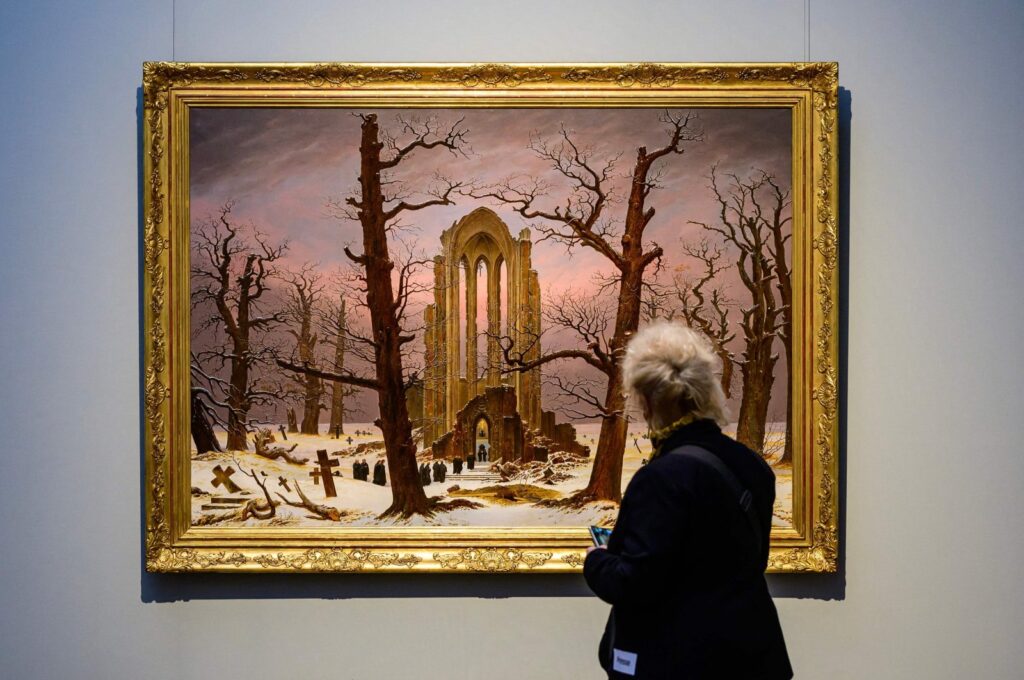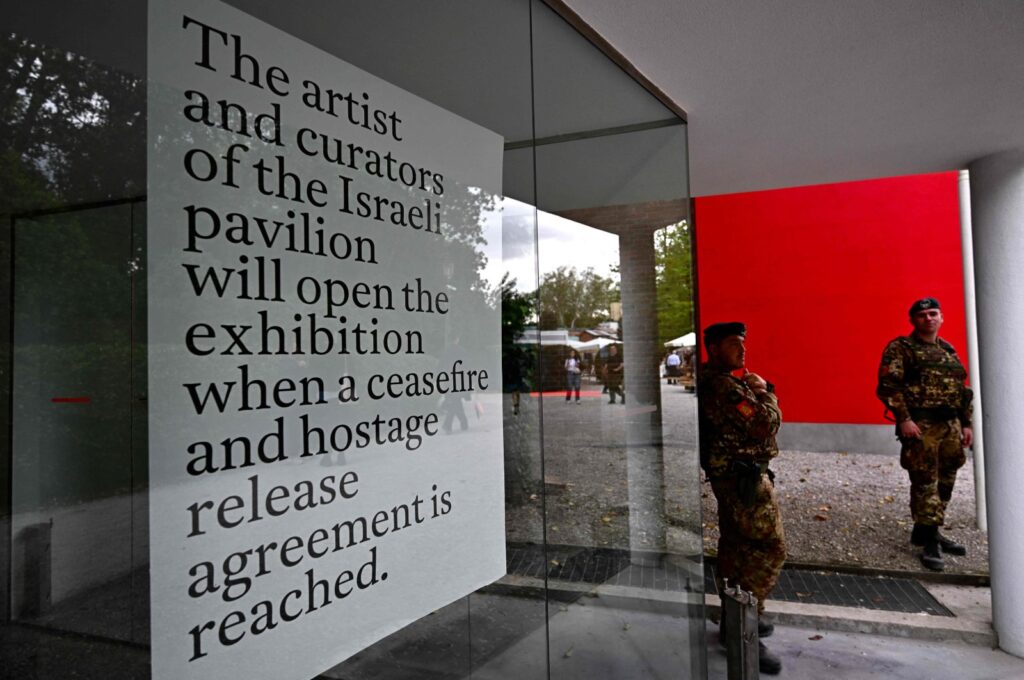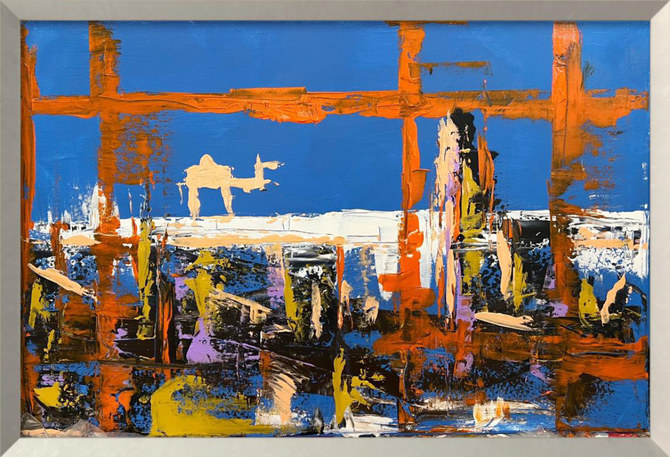
Makiko Takakura
TOKYO : Teppei Kojima was a clothing buyer 10 years ago when he noticed a hot new trend in the West: bonsai. The expressive trees were being used as decorations in the fashionable boutiques he visited on business trips. Store managers would brag about them. “They are cool, aren’t they?” Kojima remembers them saying.
But Kojima, now 41, also noticed something else. Many of the trees seemed to have never been pruned. He thought there might be growth potential in the bonsai business.
Kojima sought instruction from bonsai artists and studied the craft. But like any brash young outsider suddenly venturing into a Japanese traditional industry, he was given the cold shoulder.
Yet, Bonsai’s strong momentum in the rest of the world is boomeranging back to Japan, giving evangelists like Kojima a hand.
 Note the contrast between this tree’s dead trunk and the ends of its branches, where life persists. (Photo by Akira Takemura)
Note the contrast between this tree’s dead trunk and the ends of its branches, where life persists. (Photo by Akira Takemura)
One of those boomerangs has come to rest in Takamatsu, a city in the western prefecture of Kagawa, which has been the country’s biggest pine bonsai tree-producing region since before World War II.
Pines are particularly popular when it comes to bonsai, and Takamatsu has become well-known overseas as something of a bonsai capital.
Its reputation is about to be further bolstered. European sales of Japanese black pines, the main species grown in the city, are scheduled to start at the end of the year thanks to the easing of export regulations.
Hiramatsu Syunsyouen, one of many bonsai gardens in Takamatsu, boasts a history of more than a century. These days, 70% of its sales go to overseas buyers.
The 6,600-sq.-meter garden is densely populated by miniature trees and planters, but one tree is particularly eye-catching, and not only because it is larger than many of its nursery mates. “I think it is well over 100 years old,” said Koji Hiramatsu, the garden’s fourth owner.
The trunk of the old tree winds and meanders as it speaks of the passage of time. Most of the trunk is already dead and takes on a white, bonelike appearance. But the tree still has some power, which it uses to fill the ends of its branches with lush green leaves.
The tree is both alive and dead, and tells of this duality with beautiful colors and shaping. If it is a work of art, it is one Hiramatsu painted with love and technique.
The old tree wasn’t any more alive than a gravestone when Hiramatsu inherited it three years ago from an aged customer who could no longer care for it. For two years Hiramatsu watered it little by little before it started to show signs of life … before it started to express what Hiramatsu felt.
When Bonsai trees change their shape, they are reflecting their owner’s sensibilities. They do this as they are passed down from one generation to the next.
 Teppei Kojima, left, and his colleagues, mostly in their 20s and 30s, care for and lease bonsai trees to about 40 shops, mostly in Tokyo. (Photo by Akira Takemura)
Teppei Kojima, left, and his colleagues, mostly in their 20s and 30s, care for and lease bonsai trees to about 40 shops, mostly in Tokyo. (Photo by Akira Takemura)
To Kojima, the brash youngster who stuck with the craft, this is much like another of his passions, vintage jeans. Old denim, he says, changes its identity, even in the way it loses its color, as a pair of jeans passes from one individual to another.
Bonsai trees, however, undergo many more metamorphoses.
“They continue to live for the next several hundred years,” Kojima said. “They are the ultimate vintage items.”
After reminiscing about the day he gained possession of the old tree, Hiramatsu goes on to state what he feels is its best attribute. “Definitely,” he said, “it is the white and winding trunk.”
To make this feature conspicuous, the artist trimmed the leaves and pruned the branches, then used wire to alter the appearance of each branch.
Few foreign tourists are allowed into Japan these days, but bonsai gardens across the country are selling their most expensive items — those priced at more than several hundred thousand yen (several thousand dollars) — almost exclusively to foreigners.
Bonsai trees began to catch on in the West around 50 years ago, in the 1970s. Today overseas interest in the art form is especially acute in other Asian countries, particularly — and perhaps quite appropriately — in China.
Bonsai originated in ancient China before emigrating to Japan over 700 years ago. Although the detailed history of bonsai is not known, the term began to be used in the late Edo period (1603-1867) by Japanese intellectuals friendly with Chinese litterateurs, according to Toru Yoda.
Yoda has written a book about the history of bonsai. He currently serves as chief of the Curator’s Section at Toyama Memorial Museum in Kawajima, a town in Saitama Prefecture, just north of Tokyo.
Among Japanese intellectuals in the late Edo period, the art of bonsai was all about arranging the trees so they would look like those that appeared in landscape paintings. The arrangements were planted in pots fired in kilns in China.
 Koji Hiramatsu, the owner of Hiramatsu Syunsyouen, has a reputation for coaxing tree branches into new shapes that sprout livelier blooms. (Photo by Akira Takemura)
Koji Hiramatsu, the owner of Hiramatsu Syunsyouen, has a reputation for coaxing tree branches into new shapes that sprout livelier blooms. (Photo by Akira Takemura)
“Bonsai had a strong Chinese coloration until the Meiji era [1868-1912],” Yoda said.
In those days, there was an abundance of ancient Chinese pots in Japan, many of which were purchased and brought over amid the turmoil caused by the collapse of the Qing dynasty (1636-1912). As these pots made their way across Asia, they helped kindle an appreciation for bonsai.
That mass migration of planters might be reversing itself. For the past 10 years, “Chinese people who have increased their economic strength have come to buy back antiquities scattered outside the country, including bonsai pots in Japan,” said Fumiya Taguchi, a curator at the Omiya Bonsai Art Museum in the city of Saitama.
The museum opened in 2010. Soon thereafter, Chinese visitors started coming by, taking in the displays, then asking to buy the pots. “Only the pots,” they would say. Within a few years, Taguchi said, “bonsai trees themselves as well as pots began to be recognized, and their popularity spread to various parts of Asia.”
Japan’s current style of bonsai was created during the Taisho era (1912-1926). After Japan won the First Sino-Japanese War (1894-1895), the Japanese “bonsai world tried to reincarnate bonsai as Japanese culture, instead of setting its sights on China,” Yoda said.
That meant adopting “naturalism,” Yoda went on, “which was in fashion in literature and art at the time.”
The idea many of Japan’s early bonsai enthusiasts had was to replicate the formative natural beauty of trees, their winding trunks and splitting bark, in potted miniatures. While the idea was widespread, it also explains why there is no absolute right way of creating a bonsai tree and why, unlike for the tea ceremony, there is no school. Formative natural beauty, it turns out, is in the eye of the beholder.
“As a result,” Yoda said, “bonsai has become something that resonates with people in various countries and often even makes them think they want to try their hand at it.”
Gakusei Katsumura, who exports bonsai trees to Thailand and Singapore, has 50,000 Instagram followers. His posts about the trees win him plaudits from would-be buyers every day.
“Wealthy people in their 40s or younger who have enjoyed collecting paintings and similar hobbies are buying [bonsai trees] as works of art,” Katsumura said. These living collectibles allow their owners “to retouch them. That is why the art form is said to be special.”
In Thailand and Singapore, collectors often gather on weekends to give their trees some group care. They also introduce their living works to one another as they brunch together.
 Matthew Puntigam and his colleagues run Dandy Farmer, a bonsai garden in New York. They say interest in bonsai is further increasing in the wake of the novel coronavirus pandemic. (Photo by Akira Takemura)
Matthew Puntigam and his colleagues run Dandy Farmer, a bonsai garden in New York. They say interest in bonsai is further increasing in the wake of the novel coronavirus pandemic. (Photo by Akira Takemura)
The West is taking the art form in still other directions. There, Taguchi of the Omiya Bonsai Art Museum said, “a generational change in bonsai lovers has taken place during the past 10 years, [and these younger artists] have begun to enjoy bonsai in more diverse ways and in accordance with local climates and cultures.”
Like their counterparts in Thailand and Singapore, young Western bonsai hobbyists have turned their passion into a social experience, one that often plays out over the internet.
Dandy Farmer, a bonsai garden in New York, is playing a role in making bonsai accessible to new generations.
The pots that Dandy Farmer makes are uniquely deep and narrow-mouthed. This prevents the soil from drying out and allows the owner to water less frequently. Furthermore, since a lot of New Yorkers live in apartments that don’t get a lot of sun, Dandy Farmer shades the bonsai trees it raises to acclimate them to their eventual sun-starved homes, owner Matthew Puntigam said.
To Puntigam, bonsai trees are an advanced version of potted trees. In addition to giving daily care, growers imagine how they want to shape what they are tending, then go about achieving that ideal by wiring their trees and applying other techniques, he said.
In contrast to the flourishing scenes in foreign countries, in Japan bonsai is said to be on the wane. But that might be changing. “There’re new phenomena,” Taguchi said, “like reimporting bonsai from overseas.”
Another phenomenon is that bonsai in Japan is no longer the sole domain of retired folks. More and more working-age people are beginning to attend classes.
Toju-en, a bonsai garden with a long history in the city of Saitama, has held bonsai classes for more than 50 years. Now enthusiasts in their 40s or younger account for nearly 40% of the students. Among these relatively young students are trading company employees who say they want to learn about bonsai because they are often asked about it by foreign nationals, according to Toju-en.
Seikouen, another bonsai garden located in the same city, is trying to expand the population of bonsai culturists. The number of young people taking lessons in traditional bonsai, a school representative said, began to increase several years ago.
 Hitomi Kawasaki, left, discusses the history of bonsai and where the art form is going with Masanobu Ando at Galerie Momogusa in Tajimi, Gifu Prefecture. (Photo by Akira Takemura)
Hitomi Kawasaki, left, discusses the history of bonsai and where the art form is going with Masanobu Ando at Galerie Momogusa in Tajimi, Gifu Prefecture. (Photo by Akira Takemura)
The bonsai world is growing in other directions, too. Hitomi Kawasaki, 41, is a freelance researcher who specializes in the history and popularization of bonsai. She also explains how to view bonsai trees at exhibitions.
When Kawasaki started her bonsai explanation job 13 years ago, she was told by the industry that it was unnecessary because bonsai is only about creating and growing.
But she, too, was able to bypass the industry’s cold shoulder and benefit from bonsai’s overseas popularity. Kawasaki says her workload has increased because of the international boom. Another reason she has been more able to find work, at least before the pandemic, was the increasing number of foreign tourists coming to see bonsai trees. Newbies to the craft, she says, are spreading the idea that bonsai can be enjoyed like museum pieces.
In some places, that’s exactly what they are. The Omiya Bonsai Art Museum opened as the world’s first publicly run bonsai art museum in 2010. “Until then, the genre of bonsai research itself had also been almost nonexistent,” said Taguchi, who originally specialized in art history.
Kawasaki was on hand at an exhibition in March to explain the displays. The experience gave her the impression that interest in bonsai is growing.
The exhibition was held at Galerie Momogusa in Tajimi, a city in the central Japanese prefecture of Gifu. The gallery is presided over by prominent ceramic artist Masanobu Ando.
A range of craftspeople — from metalwork artists to art gallery operators to Ando himself — prepared bonsai pots and created trees with young bonsai artist Minoru Akiyama.
“I want to come up with the kind of innovation that only outsiders can introduce,” Ando said of the bonsai medium.
He has some strong competition in that department.
At first glance, a pot made by metalwork artist Masaki Kanamori seems to be an old sheet of metal. But it has a circular cutout into which a planter fits so that only the rim is visible. This allows the sheet’s patina to lend an earthy feel, giving the impression that it is a patch of soil nurturing a tree.
“I have felt that with the passage of time, steel materials begin to have unique facial expressions due to rusting,” Kanamori said, adding that with this aging the metal gains “the flavor of organic materials. Bonsai was the perfect thing to take advantage of that.”
 The metal sheet holding this bonsai tree’s planter is meant to look like a piece of earth. It is the brainchild of Masaki Kanamori. (Photo by Akira Takemura)
The metal sheet holding this bonsai tree’s planter is meant to look like a piece of earth. It is the brainchild of Masaki Kanamori. (Photo by Akira Takemura)
As bonsai pot styles have been around for centuries, there is plenty of room to experiment with shapes and materials. The same holds for what’s inside the planters. If the types of trees used in bonsai are expanded to include herbs, people can “sometimes enjoy picking them and putting them into tea,” Ando said.
A sense of crisis convinced Ando to hold the exhibition. “If the current situation remains unchanged,” he said, “interesting attempts could start overseas while Japanese people are bound by old customs, just as ukiyo-e once created new artistic expressions in Europe.”
Degas, Van Gogh and Toulouse-Lautrec were a few of the artists who in the 1800s took inspiration from Japan’s woodblock prints.
When Kojima felt bound by those old customs a decade ago, he decided to base himself in the U.S. and China. Whenever he conducted street demonstration sales, during which he would prune bonsai trees, dense crowds of people would form around him.
 A bonsai tree decorates a Danish bicycle brand’s Tokyo shop. The tree is replaced every week by Teppei Kojima and his colleagues. (Photo by Akira Takemura)
A bonsai tree decorates a Danish bicycle brand’s Tokyo shop. The tree is replaced every week by Teppei Kojima and his colleagues. (Photo by Akira Takemura)
After his works began to find their way into luxury hotels and other businesses, his reputation became known even in Japan and he began to receive inquiries from potential customers in his home country.
Kojima and his colleagues now grow and manage trees under the Tradman’s Bonsai brand, leasing them to foreign luxury boutiques and street fashion shops alike.
Kojima’s way of creating bonsai trees is not unique; the way he displays them is. He harmonizes his trees with modern spaces by using creative lighting and decorative stands.
Danish bicycle brand Mate. Bike’s flagship Japan store opened in the Ebisu district of Tokyo in 2021. One of the first things customers see is a Tradman’s Bonsai tree adorning the shop’s otherwise black and white entrance.
Having taken root in a rugged rock, the miniature looks like a tree growing on the side of a cliff. A spotlight is used to illuminate the rock’s face, and the tree’s stern expression fits its inorganic aluminum decorative stand.
Perhaps it is fitting that Kojima first had to succeed in China before being recognized in Japan. His path traces the art form’s original journey to his home country. He, Ando, Kanamori, Kawasaki and others now find themselves in the vanguard of a movement to make sure Japan plays a role in reshaping the ancient craft’s identity to better suit the 21st century.
The post Bonsai: Japan’s living art evolves as it emigrates to rest of Asia appeared first on The Frontier Post.








